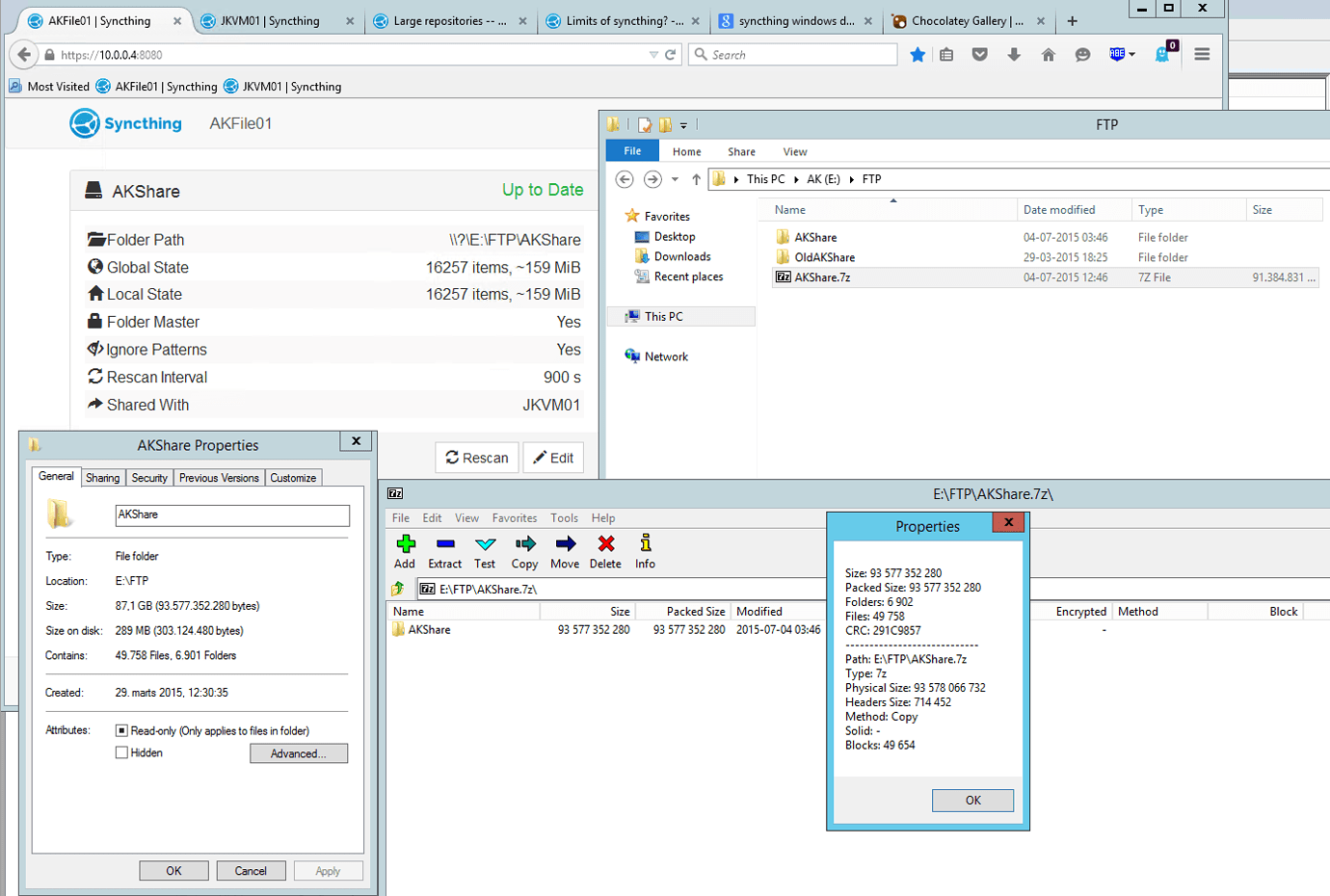

#SYNCTHING IGNORE FOLDER CODE#
I can’t keep Fira Code in iCloud because of python scripts, I can’t keep Jekyll blog like this one there because of Ruby, I can’t run bazel, etc. Second, it contains spaces! Which breaks all sorts of things, believe me or not, even in 2020. First, you can’t in your right mind type THAT every time you need to cd But that folder is called ~/Library/Mobile Documents/com~apple~CloudDocs Same as Dropbox, it also requires you to put all your stuff into a folder. But branding dictates there MUST be a Dropbox folder somewhere, even if it’s inconvenient for the user.īut the worst offender is the iCloud. Well, technically Dropbox can sync anything, of course. If you keep your projects under ~/workĪnd want to sync it, well, tough luck.
#SYNCTHING IGNORE FOLDER INSTALL#
, if I install a font on one machine, it automatically installs everywhere.Ĭontrast this with Dropbox, which requires you to put everything inside ~/Dropboxįolder. This simplicity lets you use it as a tool you can apply, sometimes creatively, to your task, not as a service you have to put up with. Here I’m syncing “system” folders: ~/Desktop Syncthing can sync any folder on your drive, located anywhere.

As simple as that.įolders are the most vivid example of how other cloud storages constantly **** up the simplest things. At no point have you to wonder “but will it work with my plan”? If your hardware allows it, it will work.

In fact, you can sync any folder with any number of people. You can sync any folder, no matter where it’s located. You can sync as many folders as you want. You can use as much space as you have on disk. And the “Set Up Dropbox” window is always-on-top, so it hides other required steps, which also adds to the fun.) No artificial limitsīecause Synthing is free and doesn’t depend on server-side storage, they don’t need to put weird or unnatural restrictions on you. It does not happen in a single predictable area, mind you. (It goes without saying, that all of these are different windows. Luckily, I already had an account, otherwise, it would be 5 more steps.

Only at this point can you start using Dropbox. Just to give you the perspective, these are all the steps that Dropbox puts you through when you install it on a new computer:Īaaaand… that’s not all! You also get this annoying notificaiton to deal with: Heck, setting up autostart on Linux server was more complex than just running the app itself!
#SYNCTHING IGNORE FOLDER PASSWORD#
There’s no installers, no package management (but there are packages if you want to), no registration, no email, no logins, no password creation, no 2FA, no consents, no user agreements. It’s ready to sync with any other Syncthing node, no other setup necessary. After you run that binary, you have a fully operational node of Syncthing. It’s so simple I thought I missed something. Frankly, I almost ceased to believe it’s still possible. It’s amazing how great computer products can be when they don’t need to deal with corporate bullshit, don’t have to promote a brand or to sell its users. Syncthing is everything I used to love about computers. It brings the joy of use and makes you believe the collapse of civilization The sanity, the simplicity, the reliability, the features. , I decided it’s time to try something different. Finally, a few days ago, after iCloud cryptically broke again I moved to iCloud, but it was even worse. In the beginning, Dropbox was great, but in the last few years, they started to bloat up. I’ve been struggling with file sync solutions for years


 0 kommentar(er)
0 kommentar(er)
